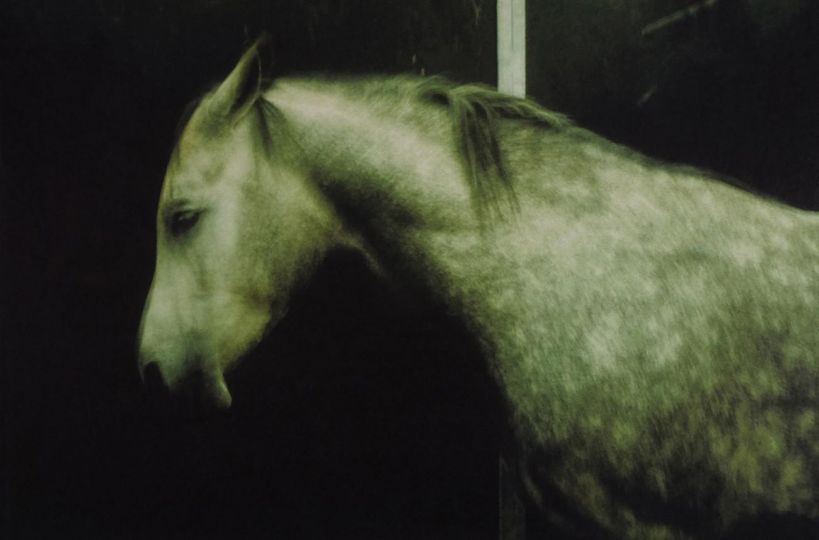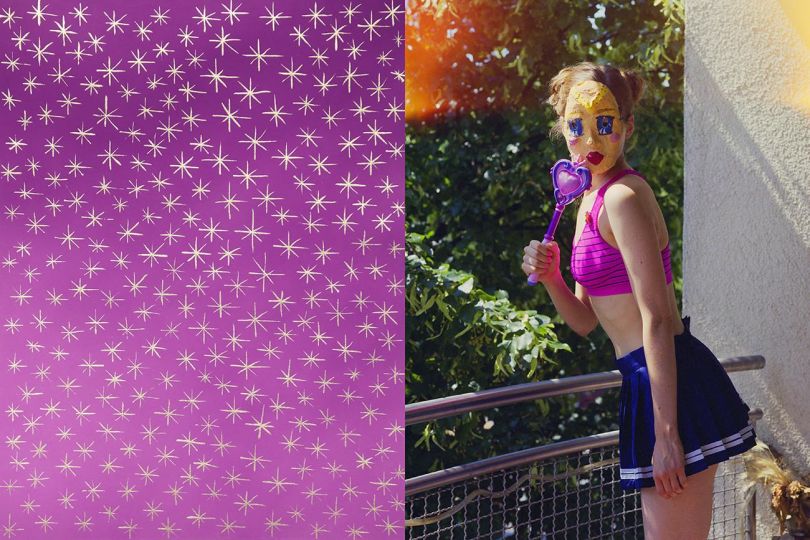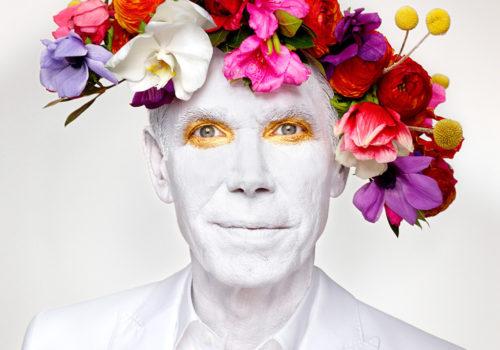Published under the Fashion Eye collection (Éditions Louis Vuitton), Helmut Newton’s Monte Carlo shows the Mediterranean atmosphere, the tall concrete towers and the fantasy of wealth and luxury. Newton conceived a photographic work where fashion is mixed with scandals, crimes, lusts and desires. Under his glance, Monte Carlo is vibrant.
June and Helmut Newton left their Parisian life and home in 1981. They moved to Monaco for tax reasons. The German photographer, naturalized Australian, already knew the splendor of Southern France. In 1964, he had bought a stone house located in a small vineyard in Ramatuelle. But like her picture of Princess Caroline (H.R.H. Carolina, Princess of Hanover, Monte Carlo, 1983), Monte Carlo seems a sad and black city in its blazing sun. Matthias Harder, chief curator for the Helmut Newton Foundation (Berlin) confirms, the city “was somewhat ill-fated”.
All the innumerable hotels, the luxury brands, the casinos and yachts form a concrete landscape. “Monaco is neither a city, a health resort nor a vacation town”, says Newton. But he became accustomed to the daily-life there; the city shaped him. Newton strode across the beaches, finding beauty everywhere, on the construction sites or on the edges of swimming pools, on the roofs of hotels or the front window of the Oceanographic Museum. He used Monte Carlo and its symbols of opulence to stage pictures.
In Monte Carlo, for almost twenty years, Newton juggled with genres. His models were his toys; one dressed by a brand (here is fashion), the other naked and inanimate (here a crime scene), a last one reveals a breast or her rump (and there, a scene of nudes). And all these genres are sometimes combined into one work, such as this wonderful scene made for American Vogue (July 2003). In this clinical interior and yet chic interior, a touch of passion, horror and vice, blood and a hint of sex compose the pictures.
Newton both glorifies the clothes he serves and the bodies he cherishes. The photographer reconstructs and re-plays the diptych of the elegance of ready-to-wear and radical nude. The same body photographed is dressed and then entirely denuded. Poses looks the same while the landscape emphasizes an inaccessible world. And nudity dresses these girls, as finely as a brilliantly crafted frock would detonate. Newton’s strength is right there, emphasizing this relationship between nudity and fashion in brutal or muffled environments. Newton’s idea is to show how clothing or body perfection can become an object of desire.
Eroticism, however, is not exclusively in the body. “Eroticism, for me, is in the face. Not sex. It is an old cliché to say that eroticism is the opposite of the integral nude, and yet it is so true!”, the photographer told the magazine Photo in 1975. And this eroticism is magnified by a concrete and sociological environment. “For me, a bourgeois is more erotic than a hairdresser or a secretary. Nothing, in these words, is pejorative; it’s a fact. Class, elegance, education, the sociological environment are factors I believe in. I sometimes have a bad conscience, but that’s the way it is. A middle-class woman is sexy naturally. I hate when everything is shown as if it was in a window display, it looks cheap.”
Helmut Newton’s Monte Carlo by the Louis Vuitton Editions shows how the photographer used the city to construct a radical work. His photographs still fascinate today. They looks as coarse as vulgar, full of frivolity and sexuality. And the photographer was glad about it. To Photo, he declared “good taste means anti-fashion, anti-photo, anti-girl, anti-eroticism! Vulgarity is life, fun, envy, extreme reactions!”.
Helmut Newton, Monte Carlo
Published by Éditions Louis Vuitton
50€
















